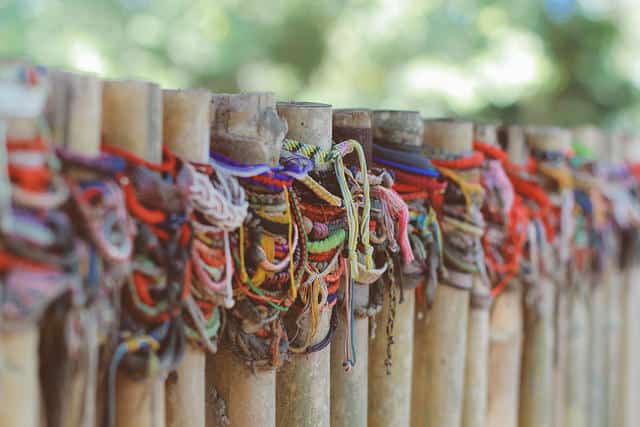When it comes to tracking the history of ancient culture down to its very specifics, not many countries can come close to Cambodia.
With its historical significance dating back to the Funan Empire in 50 AD, Cambodia boasts a historical record of around 2000 years. That is why, it is one of the most sought after locations to be visited by those who value culture, history, and an all-around glorious land that is filled with lush-green sights to behold. Therefore, if you are a person who ticks any of these boxes, then it would be a good idea to get your Cambodia visa in advance, ahead of whenever you want to visit this magnificent country.
What makes Cambodia so special are not just the historical buildings and locations that it has been provided by the ancient empires, but also the natural biodiversity that it has been gifted by nature itself.
Due to these factors, a visit to Cambodia is easily one of the most immersive experiences that any tourist can have even without the added flashes of the neon lights of Vegas or the lucrative casinos of Macau. The simplicity of Cambodia acts as its most lucrative factor, which is arguably the most beautiful thing that you can notice about a specific region.
If you are planning a visit to Cambodia whether to learn about the culture or just to relax in its natural beauty, then knowing about which segments to look forward to might help you in creating an itinerary that would keep you organized yet open for fun over your trip.
Without further ado, here are some of the most famous aspects of a visit to Cambodia that would help you gain knowledge about the region while also creating unforgettable and fun memories for you and your loved ones.
The Historical Sites in Cambodia

Once again, Cambodia is immensely rich in terms of history. As with other historical sites, the association of the history itself comes with a mixed feeling of joy and grief; but nonetheless, it lets you learn about human history, the consequences of the actions of past civilizations, and the comparison of decisions taken decades ago to the ones that the humans are making in this day and age.
The Khmer Rouge Killing Fields, also known as the Cambodian Killing Fields, are what denote to the last sentence the most. Originated out of mass killings of over a million people during the Khmer Rouge regime, these sites hold a historical significance of those who were not fortunate enough to survive what can only be called a genocide. The fact that these killings took place just over 4 decades ago, between 1970-1975, brings about a profound feeling in itself.
While many sites are tied with the Killing Fields era, the Choeung Ek Genocidal Center remains as one of the most famous locations of the genocide. It stands as a monument to the victims of the genocide, while the other locations such as Tuol Sleng house museums that tell the story of those who couldn’t survive the brutal regime.
Apart from these two sites from recent history, the Bayon Temple remains tall as an ancient history monument, being built in the 12th or 13th century. The temple is the epitome of ancient architecture, where just one look at it is enough to transport you back to the era where this state temple with no less than 216 stone faces was built with exceptional craftsmanship.
Moving to other sites, you will also be able to visit the Angkor Wat, which stands tall as one of the largest monuments in the world when it comes to religious structures. According to the United Nations Educational, Scientific and Cultural Organization (UNESCO), Angkor has the distinction of being one of the most popular sites to be visited by tourists all over the world, which is not shocking at all once you read more about it or have the opportunity to visit its magnificent temple yourself.
About the Natural Wonders of Cambodia

Looking past the historical sites and towards the more natural ones, the Angkor Center of Biodiversity might be one of the most fantastical displays of nature’s creations in their natural habitat. The biodiversity center is a great place to learn more about the different species that roam the lands of Cambodia, and remains a must visit for those with a certain adoration for wildlife.
Speaking of which, the Tonle Sap Lake should also be on your list of locations that cannot be missed when it comes to appreciating nature and wildlife in their most magnificent forms. The biodiversity mentioned above can be easily appreciated at the lake and its adjacent area, which would let you witness different animals, birds, and fishes roaming in their natural setting and provide you with memories that you would cherish for the rest of your life.
With this, the lush green lands that you can witness throughout these locations and across many other sites within Cambodia would sing praises of the region’s status as a prime tropical spot on the Earth.
To summarize, a visit from this perspective would also leave you just as fulfilled as a visit from a historical point of view.
About the Gastronomical Offers of Cambodia
Cambodia is one of the richest regions when it comes to fresh food consumption. The food that is served here is mostly made out of fresh ingredients and meat, and prepared with influences from various cuisines of cultures that have touched the region in its many years of development.
In Cambodia, you can find pho-like soups that are not really pho; you can find seafood that is prepared within minutes of being caught from the ocean; and you can enjoy pork and chicken dishes that are created with the aforementioned fusion of flavors that you can identify easily, but would not be able to taste in the delicious combination that Cambodia makes possible for you.
Visit Cambodia with a Warm Heart and You Will End Up Learning A Lot
When you visit Cambodia, you will be visiting a land that is rich in everything that money can’t buy, and experiences that cannot be found anywhere else in the world.
Overall, a visit to Cambodia is a visit to a location whose associated feelings cannot be emulated elsewhere. Therefore, if you are to visit this land of wonders in the near future, then you are definitely in for a treat.
